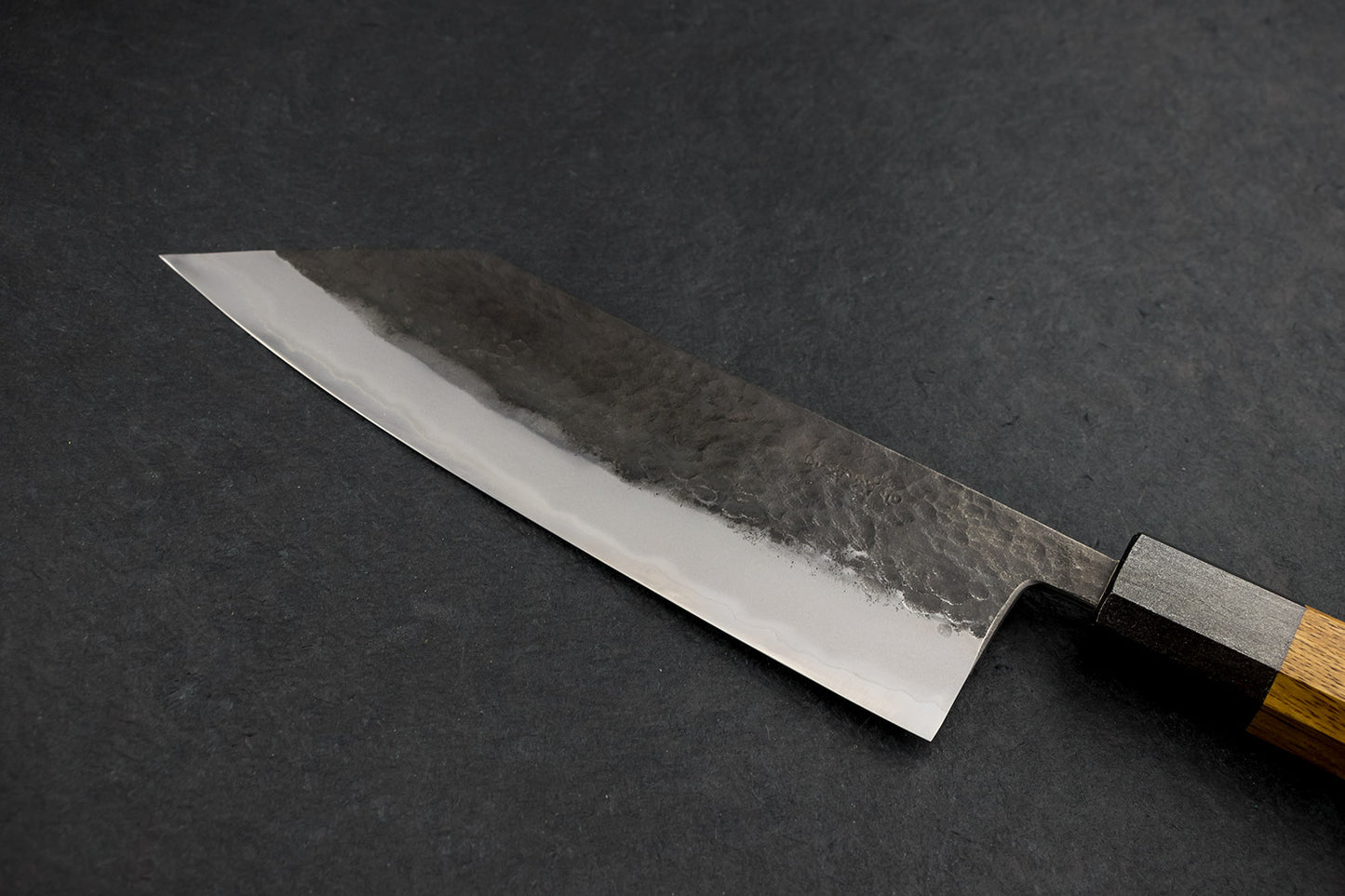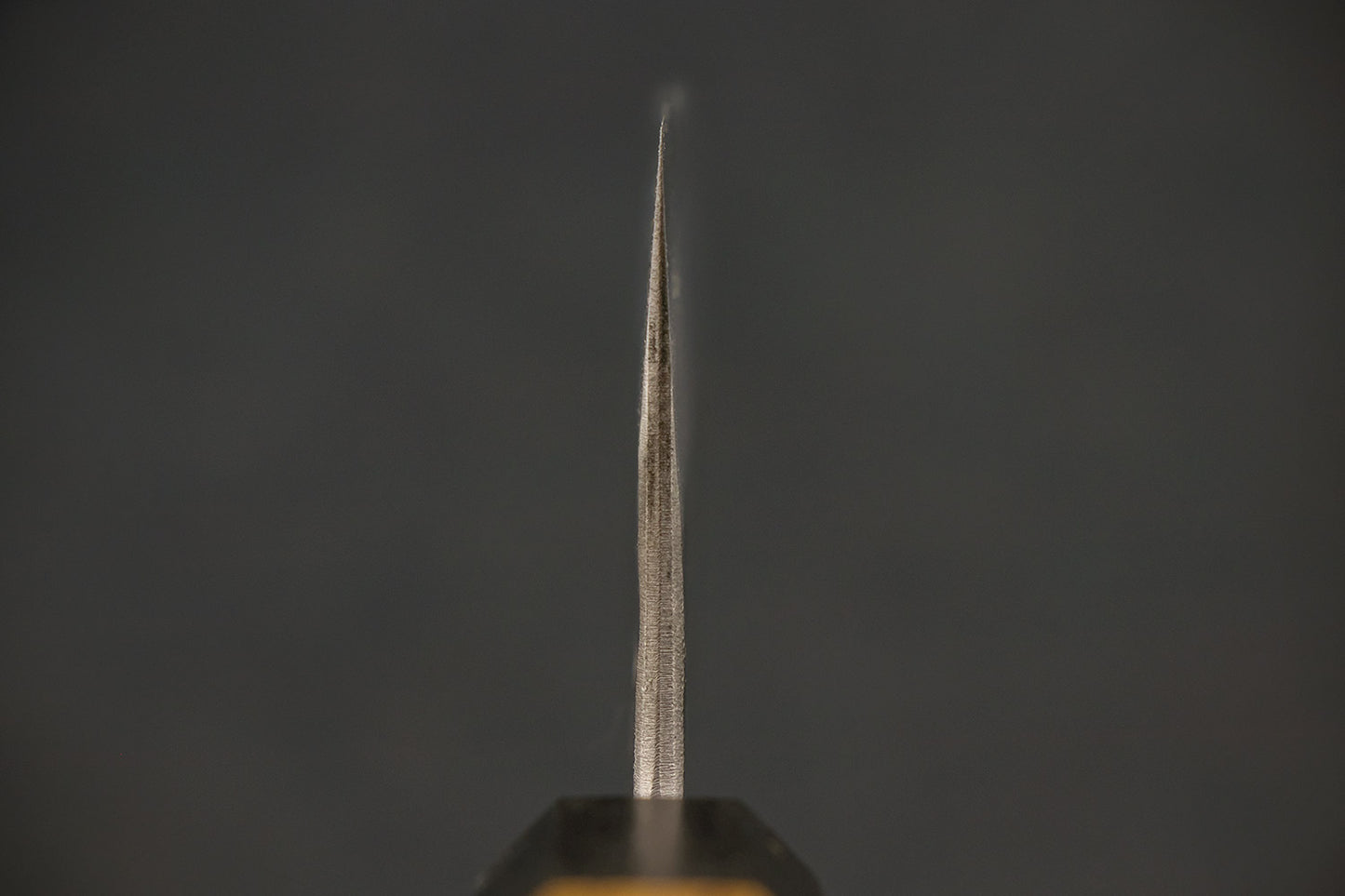Miyazaki Kajiya Tsubaki Aogami Stainless Kurouchi Tsuchime Hakata 180mm
Miyazaki Kajiya Tsubaki Aogami Stainless Kurouchi Tsuchime Hakata 180mm
Couldn't load pickup availability
About the Shape - The Bunka is a bonafide badass, like a kitchen knife in a leather jacket. It is a multi-purpose knife akin to the Santoku. “Bunka” translates to “culture". This multi-purpose kitchen knife is great for dicing, slicing or mincing. Like a santoku, it's a cross between the nakiri and a gyuto, just a little more badass looking.
About the Maker - Haruki Miyazaki-san is a 35-year-old blacksmith in Goto islands in Nagasaki prefecture. He decided to become a blacksmith and apprentice under Ooba-san in Fukuoka after he graduated high school, and after 5 years of apprenticeship, he moved back to Goto islands and opened his own workshop. His knife style is called “Hakata”, which is another name for Fukuoka and when people say Hakata ramen, that refers to typical Tonkotsu ramen from Fukuoka.
| Shape | |
|---|---|
| Blade Length | | |
| Blade Height | |
| Blade Thickness Above Heel | |
| Weight | |
| Steel Type |
Rust Prone ⓘ
This knife can rust, click to learn more.
|
| Rockwell Hardness | 62 - 63 |
| Edge/Bevel | |
| Handle | Wa (Japanese) Handle - Octagon Oak Black Pakkawood Collar |
| Blacksmith | |
| Made in |
A note about measurements: Handmade Japanese knives can vary in their dimensions, so these measurements are only an example.
Knife Care
Knife Care
Shipping and Returns
Shipping and Returns
We aim to ship your order within 1 business day at Knifewear, if there is a hold up, we'll aim to let you know and give you a timeline.
We offer $3 shipping on orders over $100* anywhere in Canada and $200* to customers in the USA. We ship worldwide, and offer up to the minute rates from our shipping partner DHL.
*Konro Grills and some other larger items are excluded from the free shipping offer.
How do I make a return on an online order?
No worries, we've got you sorted. Head over to https://knifewear.com/returns and follow the prompts.
Can I pick up my order Curbside / At the store?
Absolutely, as long as all the items you are looking for are in stock at the location you want to pickup from, you'll be able to select that at the checkout. If one or more items aren't at your preferred location we are happy to ship it to you.
Request Additional Info
Request Additional Info










